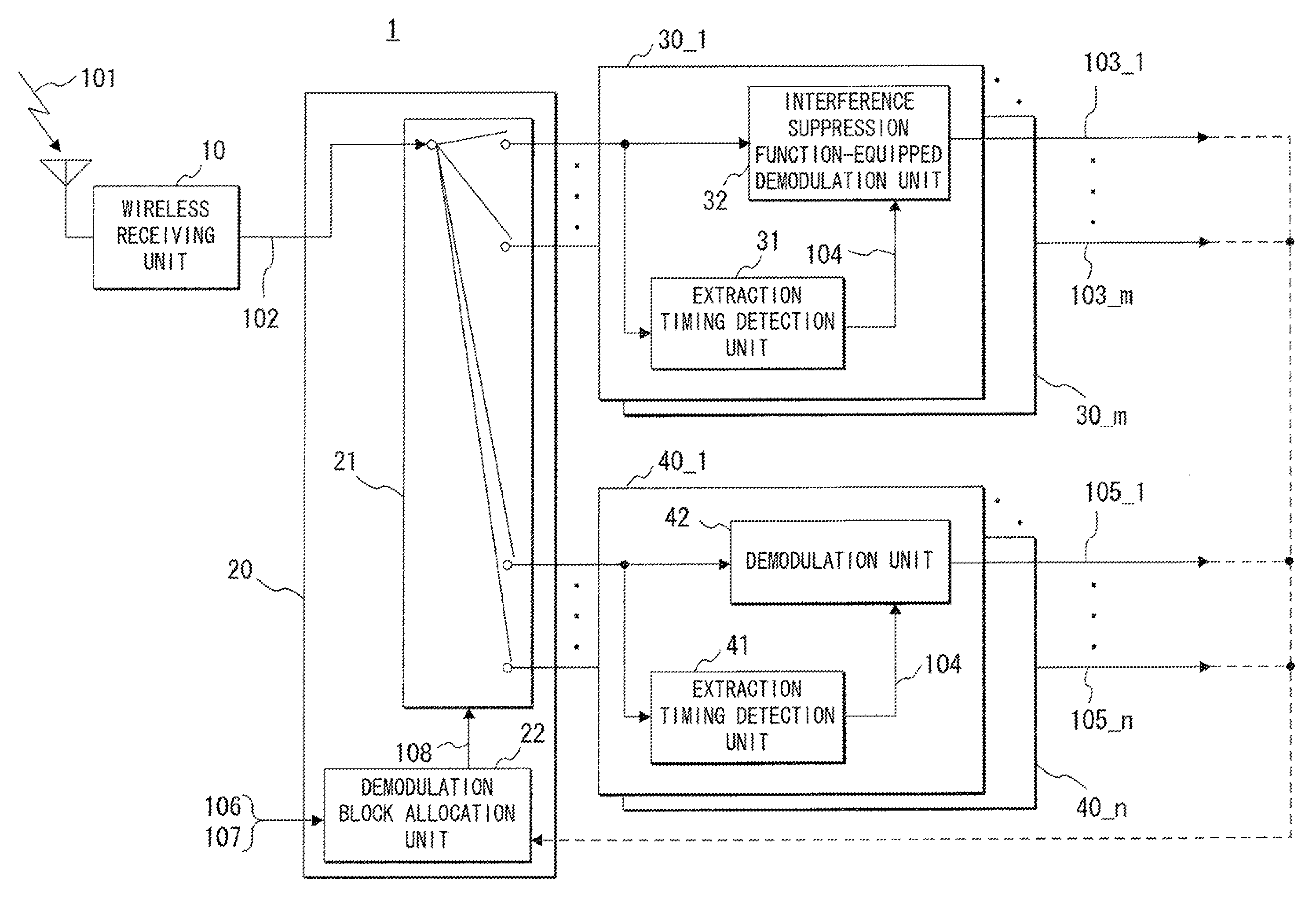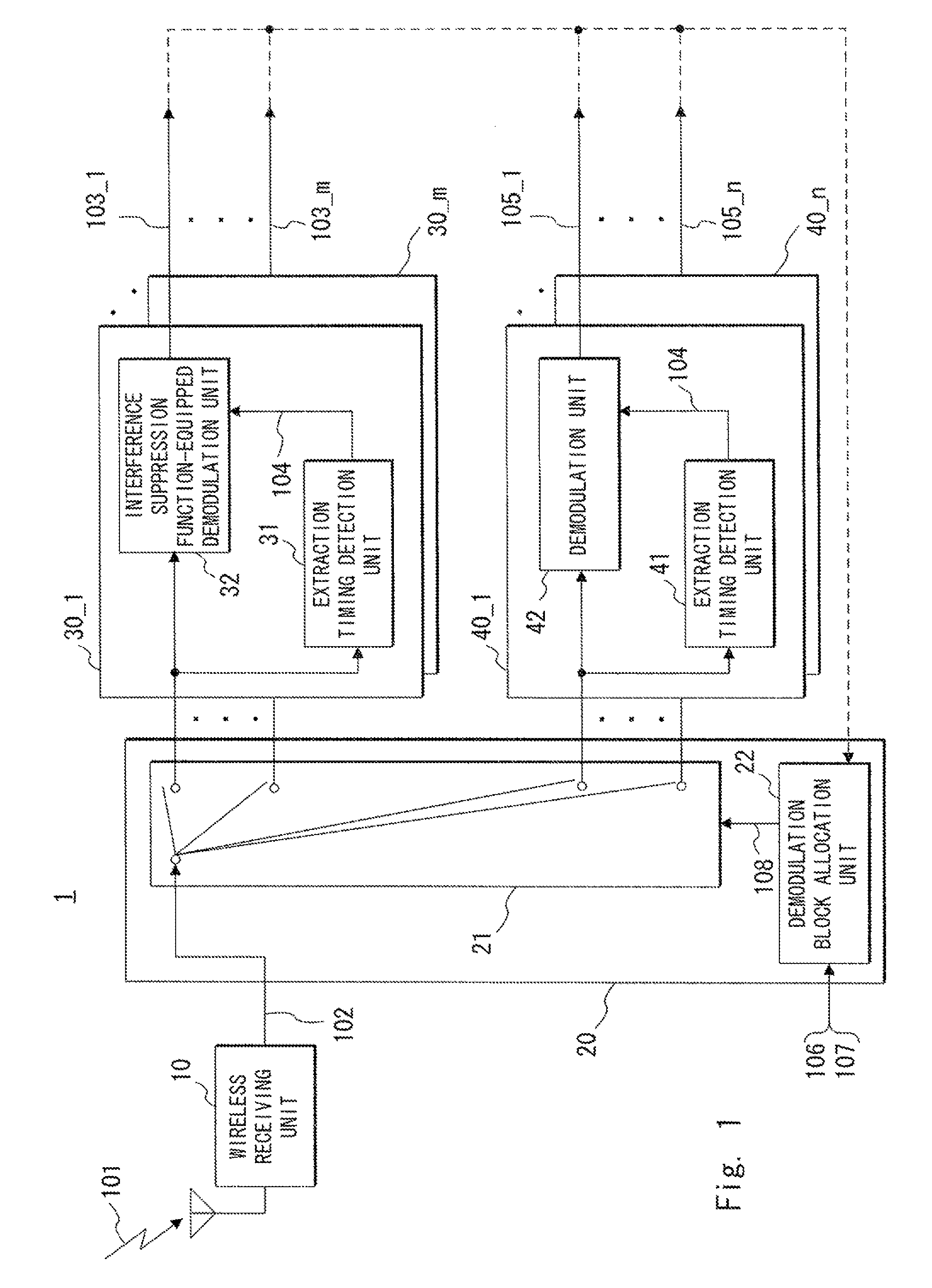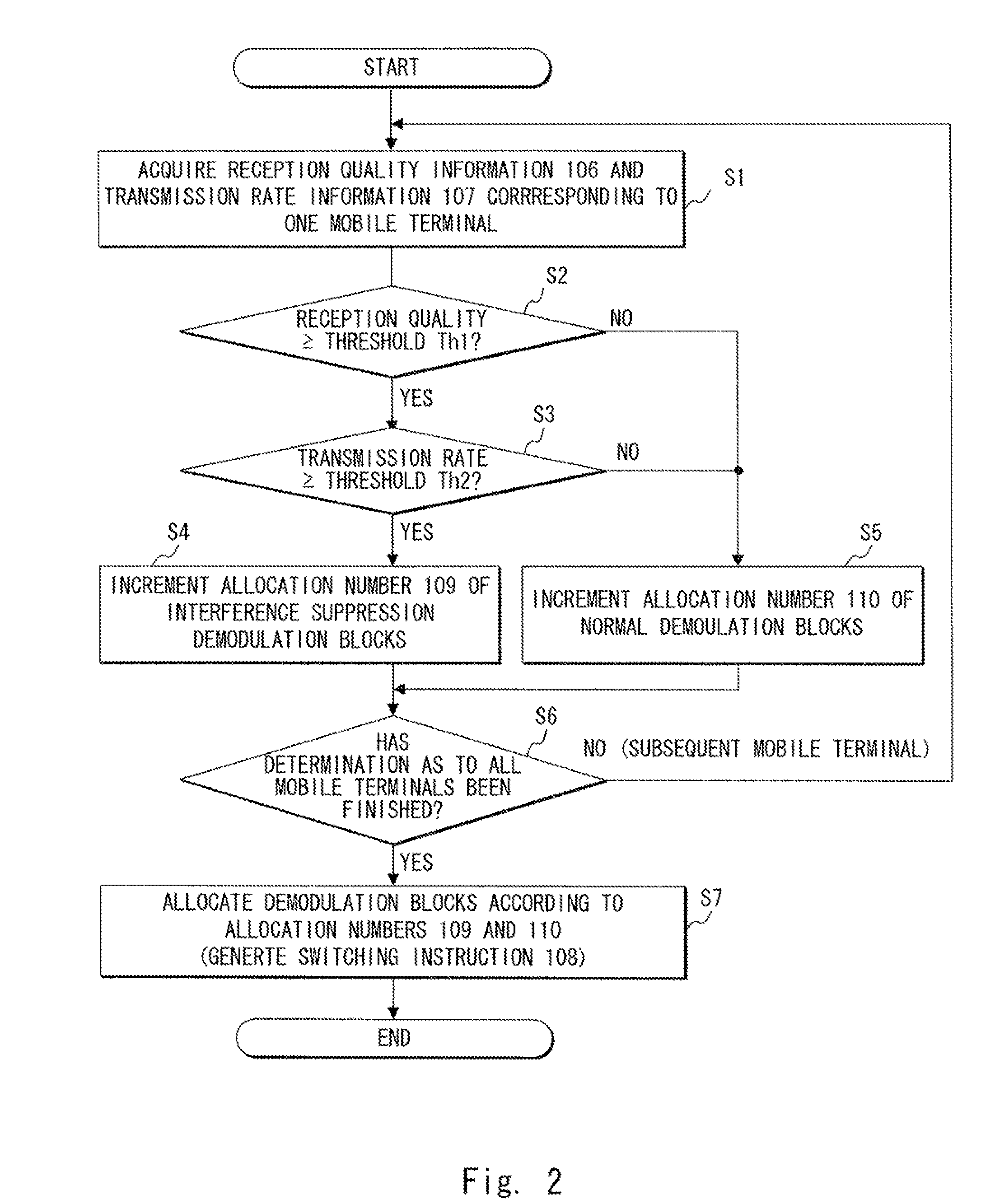Wireless base station receiving device, and signal demodulation method and program used therein
a wireless base station and receiving device technology, applied in the direction of transmission path division, multiplex communication, orthogonal multiplex, etc., can solve the problems of deteriorating the reception quality of user signals in wireless base station devices, major issues, etc., to achieve sufficient interference suppression effect, increase the reception quality of user signals, and improve user signal demodulation efficiency
- Summary
- Abstract
- Description
- Claims
- Application Information
AI Technical Summary
Benefits of technology
Problems solved by technology
Method used
Image
Examples
Embodiment Construction
[0037]Hereinafter, exemplary embodiments of a signal demodulation method according to the present invention and a wireless base station receiving device to which the method is applied will be described with reference to FIGS. 1 to 4. Note that the same components are denoted by the same reference numerals through the drawings, and redundant description is omitted as needed for clarity of description.
[0038]A wireless base station receiving device 1 according to this exemplary embodiment shown in FIG. 1 includes a wireless receiving unit 10, an interference suppression determination unit 20, m (m30_1 to 30—m, and n (n40_1 to 40—n (hereinafter, also collectively denoted by reference numeral 40). Note that there are no limitations on the communication method employed by the wireless base station receiving device 1. The wireless base station receiving device 1 may employ any of the above-described FDMA, TDMA, CDMA, OFDMA, and the like.
[0039]Among these, as the wireless receiving unit 10,...
PUM
 Login to View More
Login to View More Abstract
Description
Claims
Application Information
 Login to View More
Login to View More - R&D
- Intellectual Property
- Life Sciences
- Materials
- Tech Scout
- Unparalleled Data Quality
- Higher Quality Content
- 60% Fewer Hallucinations
Browse by: Latest US Patents, China's latest patents, Technical Efficacy Thesaurus, Application Domain, Technology Topic, Popular Technical Reports.
© 2025 PatSnap. All rights reserved.Legal|Privacy policy|Modern Slavery Act Transparency Statement|Sitemap|About US| Contact US: help@patsnap.com



